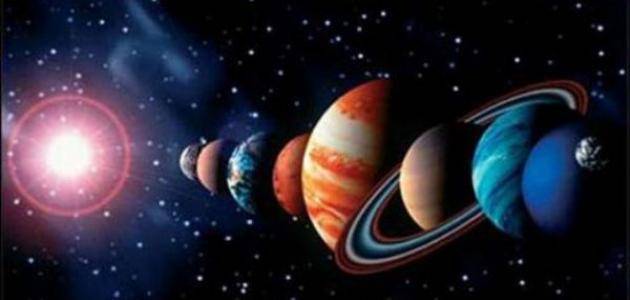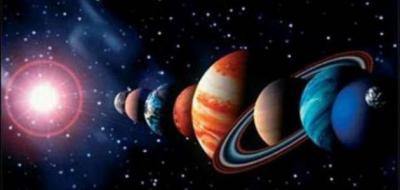Sky watchers are preparing to enjoy a range of celestial events this year, including major attractions that will captivate millions, such as total solar eclipses and stunning meteor showers throughout the year. The aurora borealis is also expected to be more common as the sun approaches its solar maximum. Additionally, there will be captivating conjunctions between the moon and the closest and brightest planets that can be seen with the naked eye.
**January**
According to National Geographic, the new year kicks off with an event described by NASA as "one of the best meteor showers on the astronomical calendar." The Quadrantids Meteor Shower is expected to peak on January 3-4, 2024, although the meteor shower begins hitting our atmosphere at the end of December. On January 18, astronomy enthusiasts will witness a notable conjunction between two bright neighboring worlds: the moon and Jupiter, with the largest planet in the solar system appearing next to a glowing half-moon.
**February**
If you miss the conjunction in January, don’t worry, as Jupiter and the moon will meet again in the sky on February 14, March 13, and April 10 in a series of conjunctions following the moon's monthly cycles around Earth.
**March**
In March, astronomy lovers will have a date with a penumbral eclipse, also known as a "false eclipse." A penumbral eclipse occurs when the moon enters a region close to Earth's shadow called the penumbra, so Earth's shadow does not fall on the moon, resulting in only a dimming of its light by about 10%. The most prominent celestial event of this month will be the total solar eclipse across North America, where the moon completely covers the sun. The path of totality, where the moon entirely obscures the sun's disk, will pass through four states in Mexico, 15 U.S. states stretching from Texas to Maine, and five Canadian provinces in the eastern part of the country. A bright comet is also expected to pass near Earth in April. This giant comet, three times the size of Mount Everest, is named 12P/Pons-Brooks and is rapidly heading toward the inner solar system.
**May**
According to astronomers, the Eta Aquarids meteor shower will peak in the early hours of May 4, when the waning crescent moon will barely rise just before dawn, meaning the particularly dark sky will allow stargazers to observe even the faintest meteors. National Geographic states that sky watchers in the southern hemisphere can expect to see an impressive display of about 20 to 30 meteors per hour, while observers in the north can anticipate between 10 to 20 meteors per hour.
**June**
June will witness the summer solstice, which will be the longest day of the year for residents of the northern hemisphere, marking the official start of summer and the gradual transition toward autumn. This event will take place on June 20, 2024.
**August**
According to National Geographic, in mid-August each year, Earth passes through a cloud of debris shed by Comet Swift-Tuttle, resulting in a wave of meteors in the sky as the small meteors burn up in the atmosphere. The annual Perseids meteor shower occurs every year between July 17 and August 24 and is one of the highlights of the astronomical year for stargazers, potentially producing up to 60 meteors per hour in a typical year. The year 2024 is particularly exciting for the Perseids, as the peak meteor activity will coincide with a dark moonless sky. The eighth full moon of 2024, on August 19, will be the first of four supermoons for the year and will also be the "blue moon," as it will witness two full moons in one month of the common calendar.
**September**
Comet hunters will closely watch the celestial body A3 Tuchinshan-ATLAS, first observed in February 2023, which is expected to become a stunning sight in late 2024. As September approaches, the comet’s orbit will bring it closer to the sun and Earth for the first time in 80,000 years. Astronomers anticipate it may become brighter, possibly visible with binoculars or even to the naked eye, appearing low in the eastern sky before sunrise in southern latitudes. According to National Geographic, if the comet survives its trip around the sun, peak viewing for observers in the northern hemisphere will begin around October 12. As it rises in the evening sky each night, the comet will gradually become more visible. September will also witness a supermoon, and the world will be treated to a supermoon on September 17, when the moon appears slightly larger than usual due to being at its closest point to Earth.
**October**
Lucky viewers in the western hemisphere will enjoy the second solar eclipse of 2024. The path of the annular eclipse mostly crosses the Pacific Ocean, limiting visibility from Earth to a few locations. This phenomenon occurs when the moon is farther from Earth than during a total solar eclipse, making it appear smaller in the sky. October will also see the third supermoon of 2024 on the 17th.
**November**
On November 15, astronomy lovers will be treated to the last supermoon of 2024.
**December**
The two brightest objects after the sun, the moon and Venus, will meet in the early evening sky. These two worlds will be close enough to view together through binoculars. All you need to do to enjoy this celestial alignment is look for the moon right after sunset on December 4.




